
The Royal Irish Constabulary was the police force in Ireland from 1822 until 1922, when all of the island was part of the United Kingdom. A separate civic police force, the unarmed Dublin Metropolitan Police (DMP), patrolled the capital and parts of County Wicklow, while the cities of Derry and Belfast, originally with their own police forces, later had special divisions within the RIC. For most of its history, the ethnic and religious makeup of the RIC broadly matched that of the Irish population, although Anglo-Irish Protestants were overrepresented among its senior officers.

The Garda Síochána is the national police and security service of Ireland. It is more commonly referred to as the Gardaí or "the Guards". The service is headed by the Garda Commissioner, who is appointed by the Irish Government. Its headquarters are in Dublin's Phoenix Park.

Trim is a town in County Meath, Ireland. It is situated on the River Boyne and, as of the 2022 census, had a population of 9,563. The town is in a civil parish of the same name.
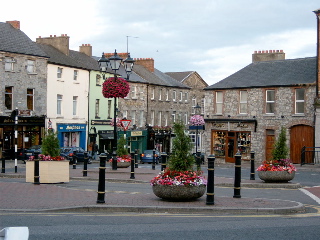
Navan is the county town and largest town of County Meath, Ireland. It is at the confluence of the River Boyne and Blackwater, around 50 km northwest of Dublin. At the 2022 census, it had a population of 33,886, making it the ninth largest settlement in Ireland. The town is in a civil parish of the same name.
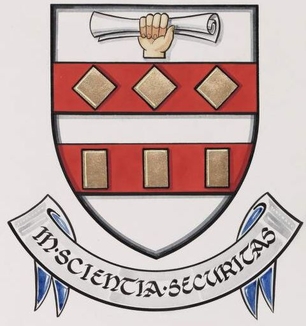
Garda Síochána College is the education and training college of the Garda Síochána. It is located at McCan Barracks, Templemore, County Tipperary in Ireland. The college has been in Templemore since 1964.
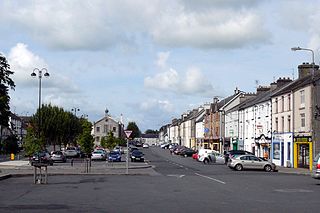
Templemore is a town in County Tipperary, Ireland. It is a civil parish in the historical barony of Eliogarty. It is part of the parish of Templemore, Clonmore and Killea in the Roman Catholic Archdiocese of Cashel and Emly.

Cavan is the county town of County Cavan in Ireland. The town lies in Ulster, near the border with County Fermanagh in Northern Ireland. The town is bypassed by the main N3 road that links Dublin with Enniskillen, Ballyshannon and Donegal Town.

The Greater Dublin Area, or simply Greater Dublin, is an informal term that is taken to include the city of Dublin and its hinterland, with varying definitions as to its extent. At the expansive end, it has been defined as including all of the traditional County Dublin and three neighbouring counties, while more commonly it is taken as the contiguous metropolitan area of Dublin plus suburban and commuter towns. The area is defined for strategic planning, and, for example, transport, and it is not a formal administrative or political unit.

Nobber is a village in north County Meath, Ireland. It is on the Navan–Kingscourt road (R162), about 19 kilometres (12 mi) north of Navan. This places the village about 60 kilometres (37 mi) from the M50 motorway, the orbital motorway of Dublin. The village is in a townland and civil parish of the same name.

Meath County Council is the local authority of County Meath, Ireland. As a county council, it is governed by the Local Government Act 2001. The council is responsible for housing and community, roads and transportation, urban planning and development, amenity and culture, and environment. The council has 40 elected members. Elections are held every five years and are by single transferable vote. The head of the council has the title of Cathaoirleach (chairperson). The county administration is headed by a chief executive, Jackie Maguire. The county town is Navan.
This is a description of law enforcement in Northern Ireland and the Republic of Ireland. Before the Republic left the union in 1922, one police force — the Royal Irish Constabulary — policed almost the whole island (aside from Dublin, where the Dublin Metropolitan Police were the main force; Belfast, where the Belfast Borough Police were the main force; and the borough of Londonderry, where the Londonderry Borough Police were the main force before merging with the RIC.
The Teeling Column was one of four armed units created by Seán Cronin for the Border Campaign in the west of Ulster.
The National Surveillance Unit (NSU) is the principal clandestine intelligence gathering and surveillance operations unit of the Garda Síochána, the national police force of Ireland. The unit operates under the Crime & Security Branch (CSB), based at Garda Headquarters in the Phoenix Park, Dublin, and also works from Harcourt Street, Dublin. Members of the unit are specially trained and selected Detective Gardaí who are tasked to remain covert whilst on and off duty, tracking suspected criminals, terrorists and hostile, foreign spies operating in Ireland. The unit's detectives are routinely armed. The National Surveillance Unit is understood to possess a manpower of approximately 100 officers, and is considered to be the most secretive arm of the force.
Sergeant Patrick Joseph Morrissey was a member of the Garda Síochána, the national police service of Ireland, killed by the INLA. His murder resulted in the last death sentences issued by an Irish court, 30 years after the last death sentence executed in Ireland.
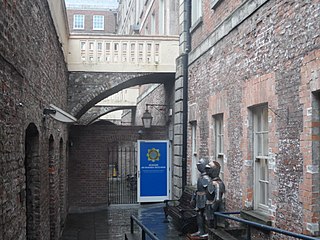
The Garda Museum is a police museum located in Dublin, Ireland, located in the Treasury Building of Dublin Castle.

Roscommon Courthouse is a judicial facility located on Abbey Street, Roscommon, County Roscommon, Ireland.
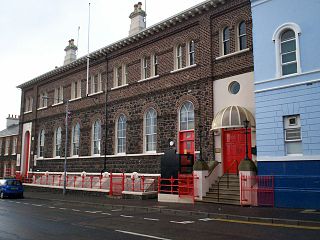
Lurgan Town Hall is a municipal structure in Union Street, Lurgan, County Armagh, Northern Ireland. The structure, which is primarily used as a community, arts and resource centre, is a Grade B1 listed building.

County Buildings is a Grade II listed building in Wrexham, Wrexham County Borough, Wales. It houses the Wrexham County Borough Museum and Wrexham Archives. It is proposed that a Football Museum for Wales be housed in the building. The building is located between Saint Mark's Road and Regent Street in the city centre and Offa, bounded by Wrexham Cathedral to the west.
The Garda College Museum and Visitor Centre was a police museum located in the chapel of the Garda Síochána College at McCan Barracks, Templemore, County Tipperary, Ireland where members of the Garda Síochána are educated and trained. The museum was popular with Transition Year school groups from the wider Munster area, as well as members of local Active Retirement Associations.

Templemore Town Hall, is a municipal building in Main Street, Templemore, County Tipperary, Ireland. As of May 2023, it was being converted into a library and enterprise and cultural centre.















